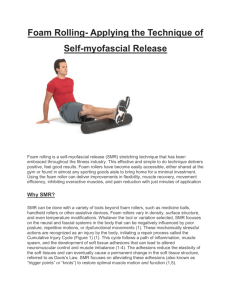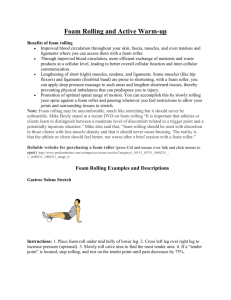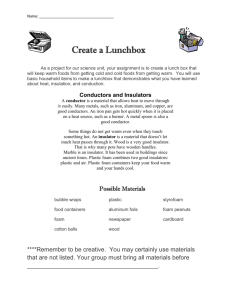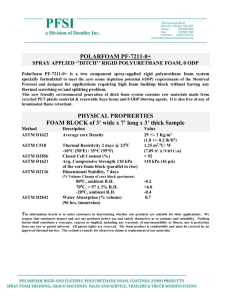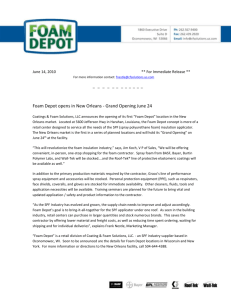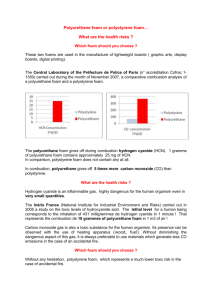Foam Rolling- The guide to helping your body get
advertisement
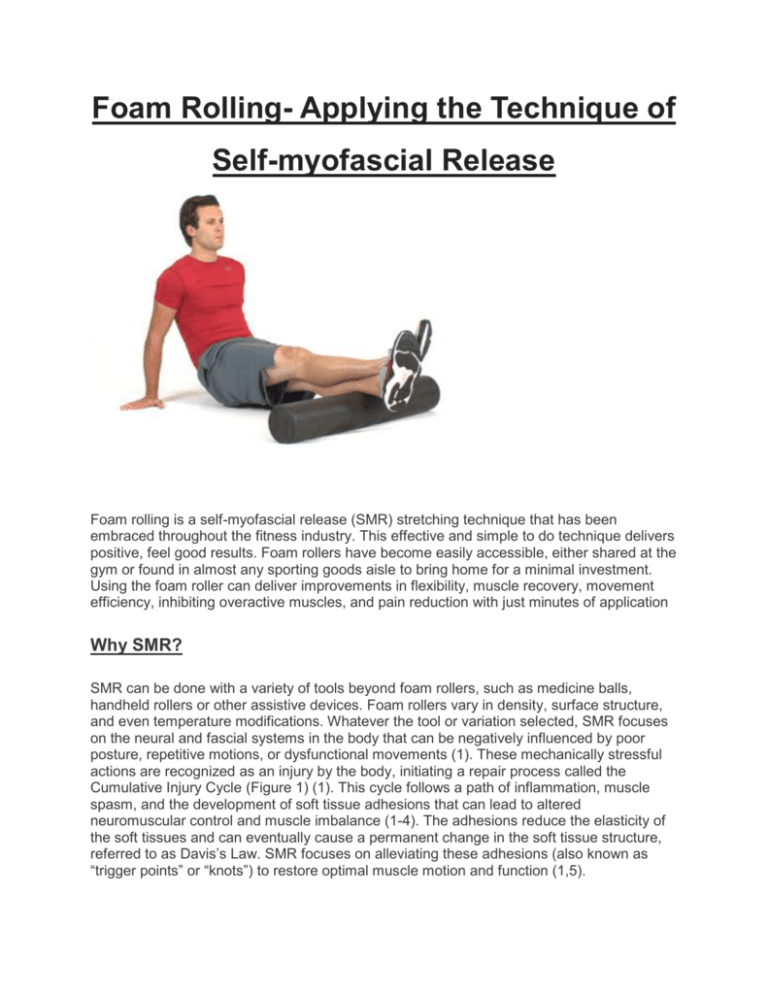
Foam Rolling- Applying the Technique of Self-myofascial Release Foam rolling is a self-myofascial release (SMR) stretching technique that has been embraced throughout the fitness industry. This effective and simple to do technique delivers positive, feel good results. Foam rollers have become easily accessible, either shared at the gym or found in almost any sporting goods aisle to bring home for a minimal investment. Using the foam roller can deliver improvements in flexibility, muscle recovery, movement efficiency, inhibiting overactive muscles, and pain reduction with just minutes of application Why SMR? SMR can be done with a variety of tools beyond foam rollers, such as medicine balls, handheld rollers or other assistive devices. Foam rollers vary in density, surface structure, and even temperature modifications. Whatever the tool or variation selected, SMR focuses on the neural and fascial systems in the body that can be negatively influenced by poor posture, repetitive motions, or dysfunctional movements (1). These mechanically stressful actions are recognized as an injury by the body, initiating a repair process called the Cumulative Injury Cycle (Figure 1) (1). This cycle follows a path of inflammation, muscle spasm, and the development of soft tissue adhesions that can lead to altered neuromuscular control and muscle imbalance (1-4). The adhesions reduce the elasticity of the soft tissues and can eventually cause a permanent change in the soft tissue structure, referred to as Davis’s Law. SMR focuses on alleviating these adhesions (also known as “trigger points” or “knots”) to restore optimal muscle motion and function (1,5). SMR is based on the principal of autogenic inhibition. Skeletal muscle tissue contains muscle spindles and Golgi tendon organs (GTO), two neural receptors. Muscle spindles are sensory receptors running parallel to muscle fibers, sensitive to a change and rate of muscle lengthening. When stimulated, they will cause a myotatic stretch reflex that causes the muscle to contract. The GTO receptors, located in the musculotendinous junctions, are stimulated by a change and rate of tension, and when they are stimulated will cause the muscle to relax (2). When a change in tension is sustained at an adequate intensity and duration, muscle spindle activity is inhibited causing a decrease in trigger point activity, accompanied by a reduction of pain (1,6-7). In simpler terms, when the pressure of the body against the foam roller is sustained on the trigger point, the GTO will “turn off” the muscle spindle activity allowing the muscle fibers to stretch, unknot, and realign (5). Davis’s Law: Soft tissue models along lines of stress. Autogenic Inhibition: The process by which neural impulses that sense tension are greater than the impulses that cause muscles to contract, providing an inhibitory effect to the muscle spindles. The Benefits of SMR SMR benefits include: Correction of muscle imbalances Muscle relaxation (1,2) Improved joint range of motion Improved neuromuscular efficiency (1,3,4) Reduced soreness and improved tissue recovery (1) Suppression/reduction of trigger point sensitivity and pain (2,6,7) Decreased neuromuscular hypertonicity (1) Provide optimal length-tension relationships Decrease the overall effects of stress on the human movement system (1) Guidelines to Start Rolling Foam rolling should be done before static or dynamic stretching activities, improving the tissue’s ability to lengthen during stretching activities. Foam rolling can also be done as part of the cool-down (1-2). Foam rolling activities should be performed on tissues identified as overactive during the assessment process. Most clients can enjoy foam rolling on their own once they’ve been instructed on how to properly perform the exercises. Foam rolling is not appropriate for all clients, including those with congestive heart failure, kidney failure, or any organ failure, bleeding disorders, or contagious skin conditions. If clients have medical issues, have them seek the advice of their medical professional before starting SMR or foam rolling activities (1). Slowly roll the targeted area until the most tender spot is found. Hold on that spot while relaxing the targeted area and discomfort is reduce, between 30 seconds and 90 seconds (1,7). During the exercises it is important to maintain core stability. Use the drawing-in maneuver (pulling the navel in toward the spine) to maintain stability in the lumbo-pelvic-hip complex (1). Take the time to experience the exercises and discover how slightly modifying positions or angles can target different areas of the muscle. Here are some of the top foam roller exercises to get you and your clients started on a path to moving and feeling better. Piriformis/Gluteus Medius Sit on top of the foam roller, positioned on the back of the hip, crossing one foot over the opposite knee. Lean into the hip of the crossed leg. Slowly roll on the posterior hip area to find the tender spot. Hold for 30-90 seconds until the discomfort is reduced. Repeat on other side. Hamstrings Place hamstrings on the roll with hips unsupported. Feet are crossed to increase leverage. Roll from knee toward posterior hip while keeping quadriceps tightened. Turn slightly to the right or left to focus more on the inside or outside of the hamstrings. Use of a massage therapy ball will more focused pressure. Calves Place foam roller under the mid-calf. Cross the opposite leg over the top of the other to increase pressure. Slowly roll calf area to find the tenderest spot. Hold that spot for 30-90 seconds until the discomfort is reduced. Especially beneficial for runners or those who regularly wear shoes with elevated heels (8). Switch legs and repeat. Adductors Lie face down and place one thigh, flexed and abducted, over the foam roller. Slowly roll the upper, inner thigh area to find the tenderest spot. Hold for 30-90 seconds until the discomfort is reduced. Switch legs and repeat. Tensor Fascia Latae (TFL) Lie on one side with the foam roller just in front of the hip. Cross the top leg over the lower leg, placing that foot on the floor. Slowly roll from the hip joint down toward the knee to find the tender spot. Hold for 30-90 seconds until the discomfort is reduced. Switch sides and repeat. Quadriceps Body is positioned prone with quadriceps on foam roll. It is very important to maintain proper core control (abdominal Drawn-In position & tight gluts) to prevent low back compensations. Start just above the knee and roll upwards towards pelvic bone, emphasizing the lateral thigh. Latissimus Dorsi Lie on one side with the arm closest to the ground outstretched with thumb facing upwards. Place the foam roller under the arm in the axillary region. Slowly roll back and forth to find the tender spot. Hold for 30-90 seconds until the discomfort is reduced. Repeat on other side. Thoracic Spine Lie on the floor with the foam roller behind the upper back. Cross arms to opposite shoulders. Raise hips off the floor and slowly roll back and forth to find the tender spot. Hold for 30-90 seconds. References- See more at: http://blog.nasm.org/training-benefits/foam-rolling-applying-thetechnique-of-self-myofascial-release/#sthash.dXZayVfo.dpuf
